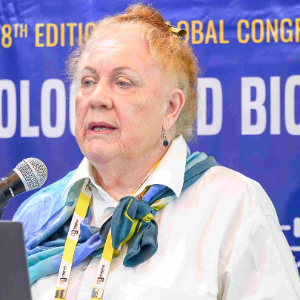Plant -Insect Interactions
Plant-insect interactions form a coevolved balance between the two species. Insects help to pollinate plants, allowing them to reproduce, while plants provide nourishment to insects in the form of nectar and other nutrients. For example, bees are attracted to the bright colors and sweet smells of flowers, and in turn, the flowers are pollinated. Plants also produce toxins to ward off predators, such as insects, which may feed on their leaves or other parts of their anatomy. This helps to protect the plant from potential damage and also helps to maintain the balance between the two species. Insects also act as prey for birds and other predators, helping to sustain a balanced ecosystem. Altogether, this complex relationship is an example of how plants and insects interact with each other in an evolutionary way, helping to keep the balance of nature in check.

Mohammad Babadoost
University of Illinois, United States
Mary Cole
The University of Melbourne, Australia
Valasia Iakovoglou
UNESCO chair Con-E-Ect, International Hellenic University, Greece
Satya S S Narina
Virginia State University, United States
Sara Hailemariam
Purdue University, United States
Midhat Mahboob
Lincoln University, New Zealand


Title : Exploring the genetic diversity in tannin-rich forages to explain the large intra species variability in tannin content
Selina Sterup Moore, Aarhus University, Denmark
Title : Isolation and functional properties of biomolecules of plants and its application
Balagopalan Unni, GEMS Arts & Science College (Autonomous), India
Title : Primed for the future: PGPR and the promise of sustainable, heritable crop resilience
Prashant Singh, Banaras Hindu University (BHU), India
Title : Revealing allelic variations in candidate genes associated with grain yield under salinity stress between two contrasting rice genotypes
Nisha Sulari Kottearachchi, Wayamba University of Sri Lanka, Sri Lanka
Title : Adaptive strategies of Aristida L. species across ecological zones of Pakistan: Linking soil characteristics with morphological and physiological traits
Iram Ijaz, University of Agriculture Faisalabad Pakistan, Pakistan
Title : Ethnobotanical survey and abundance of weeds in selected Manihot esculenta (cassava) Crantz farms in Osun state, Nigeria
Dada Caleb Mayokun, University of Ibadan, Nigeria